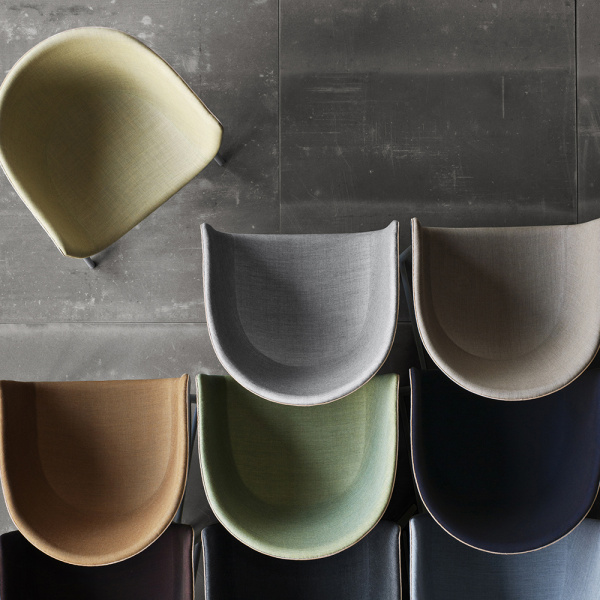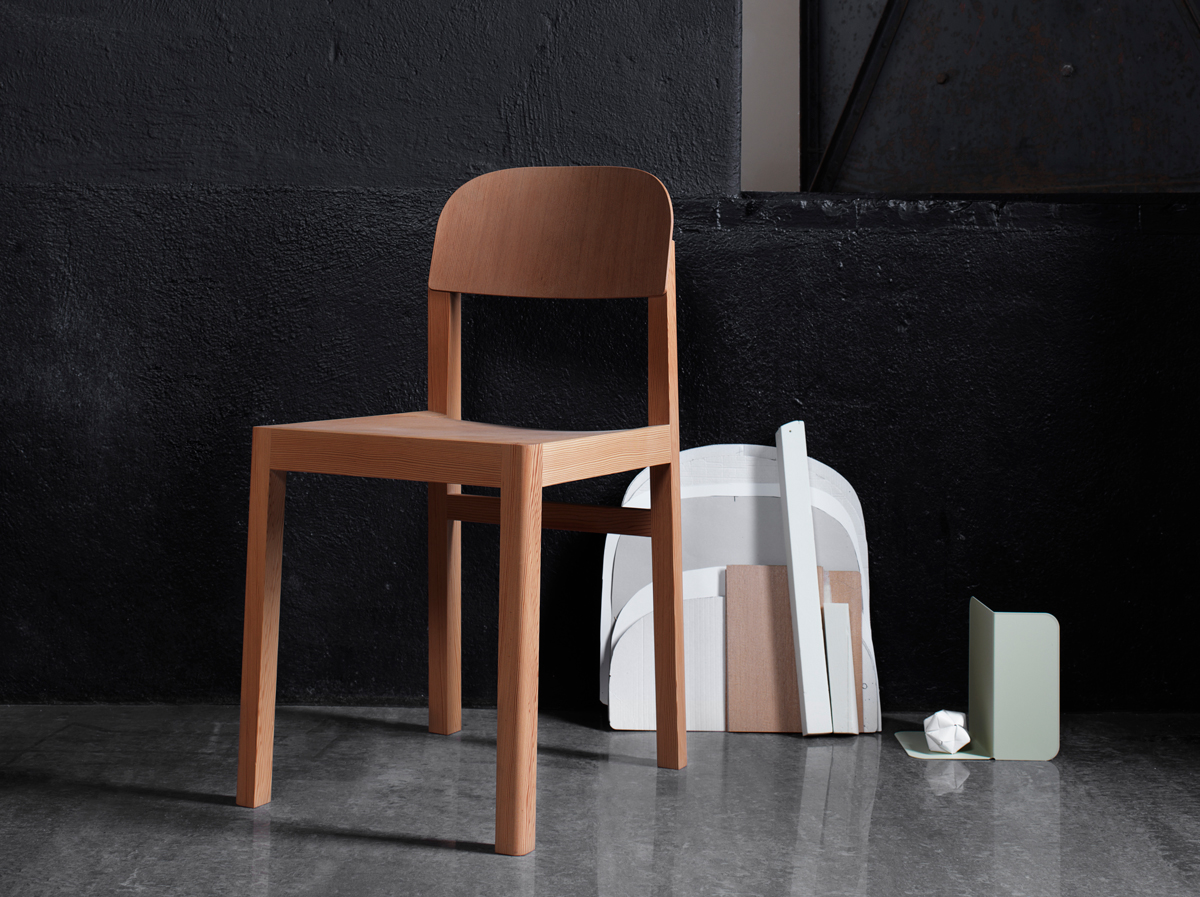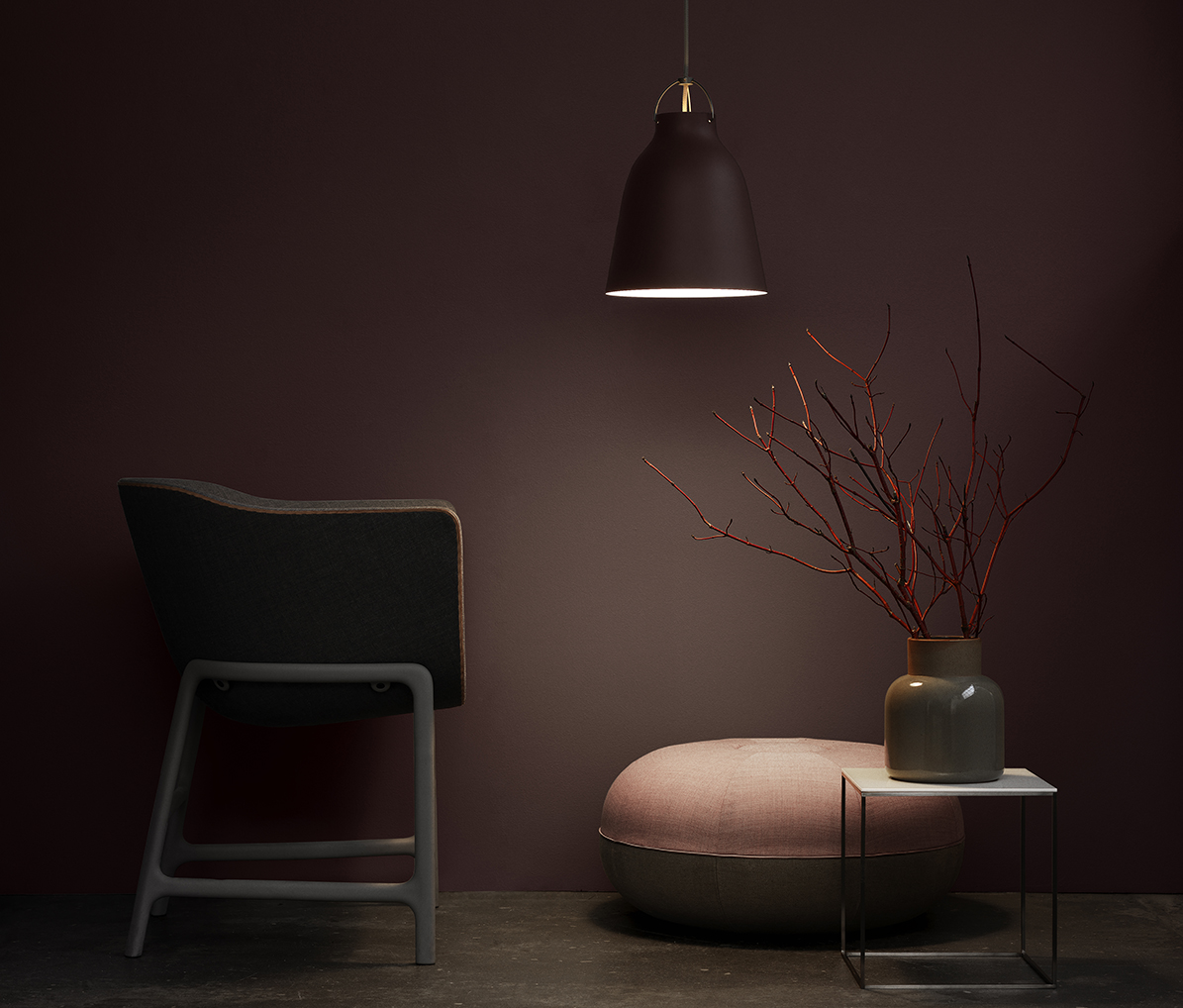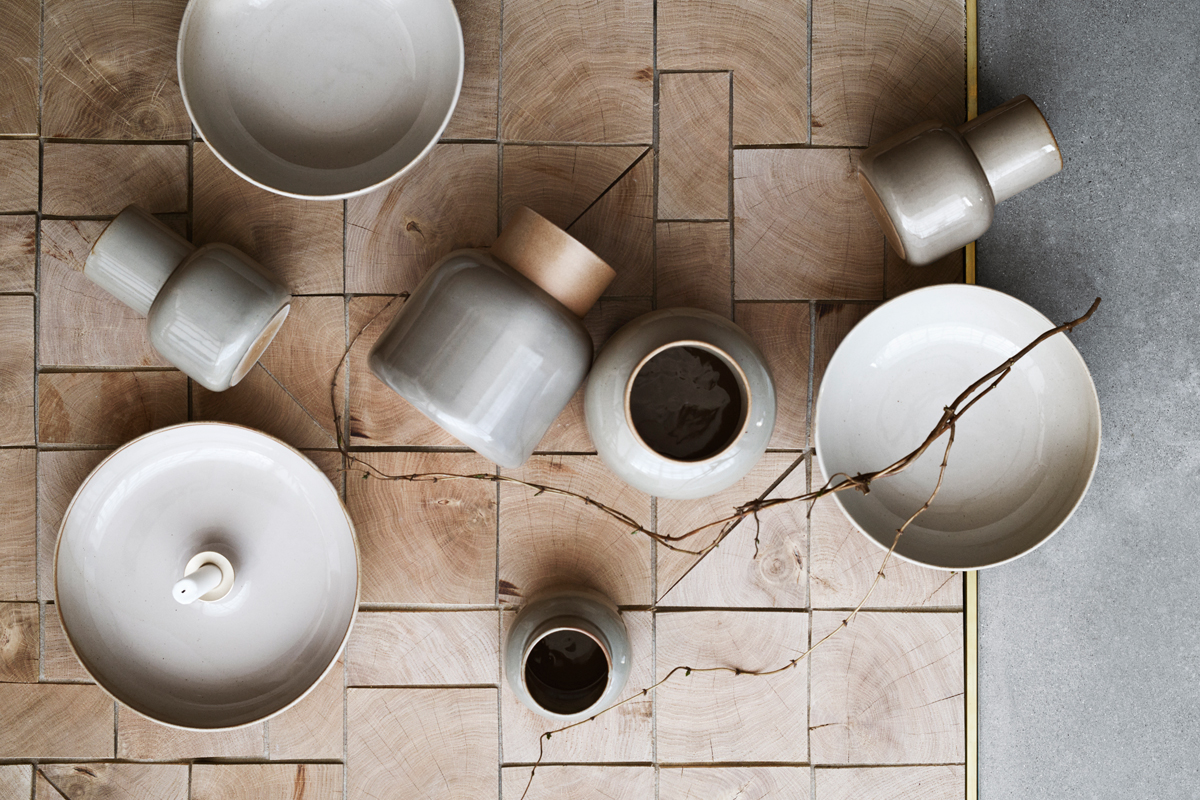Cecilie Manz is one of the most popular contemporary Danish designers within industrial design. Functionality, simplicity, and longevity are key parts of her design, whether she’s designing chairs for Muuto or speakers for Bang & Olufsen.
For Cecilie the design process is as beautiful as the final product, a trait she inherited from being around creativity all her life. She grew up north of Copenhagen as the daughter of two ceramicists, spending her days in the workshop. After graduating from the Royal Danish Academy of Fine Arts’ School of Design in 1997, Cecilie founded her studio in Copenhagen in 1998. Her work has won her several grants and awards, including the Crown Prince Couples Cultural Award 2014 and the Furniture Prize 2007. But to her success is not about fame and accolades; it’s about creating the perfect combination of functionality and long-lasting beauty.

Upholstered accent chairs designed by Cecilie Manz. Photo by Ditte Isager
Describe your parents’ ceramic studio. As a child, how did you spend time there?
Their ceramic studio was 100 meters down the road, so I would never be in day care. I would go there or be in the garden picking apples. It sounds very romantic, but that was my reality. It has been a strong presence in my life being able to learn from two craftspeople and follow their process from idea to product, solving problems and thinking of new designs.
Craftspeople are known for being great problem solvers. Were your parents great problem solvers?
My dad was a very skilled craftsman, both educated as a stove tile maker and a ceramist. Sometimes he needed tools or machines that did not exist to create specific shapes, large sizes, or unique round edges, for example. So he would invent his own. He spent half of his time coming up with solutions to problems to create the perfect functional designs. To me, that was so precious to see how everything can be possible if you put in gumption, hard work, and time. That is something I have taken with me always.

Scandinavian-style workshop chair crafted with solid Oregon pine. Photo by Muuto
Describe your current studio.
My studio is actually four smaller studios in the center of Copenhagen right across from the King’s Garden. They are connected only by the street, so we have to walk back and forth. I would be able to afford a much larger space outside of Copenhagen, but I love the city. It gives me energy. Every room is the same but different. All have high ceilings with lots of natural light. One is dedicated to drawing and rendering on computers, another is the workshop, one is for presentations, and the last one is my office. Besides me, three people work here. All of us know how to go about the workshop, but we all have different skill sets.
How much time do you spend creating versus doing other work?
As the boss and front figure of my company, I take all the major decisions and do all of the paperwork. The idea that people have of designers sitting around drawing and philosophizing all day is not real. There is a lot of administration, too. That’s why I have trained myself in creating sanctuaries where I don’t answer emails or pick up the phone. That way I know I’ll free up time to concentrate on being creative. That is still the core of my business.
Related | Christiane Müller’s Lost & Found Collection was Born From Fabric That Shaped Her Childhood
In the last year, how many days did you take off?
In Denmark and Scandinavia, we are blessed with work-life balance and long summer vacations. Ten years ago, I decided to take four weeks off every summer because most people are actually off work when the schools are out. It has become such an essential part of my creative process. I get so far off from work that I almost forget how to hold on to a pen. I completely reset myself. Some days I will work for so many hours that I’ll take a day off and spend an extra long weekend and recharge. That is one of the upsides of having your own company. I decide when to pull the plug.
Who are some of your favorite contemporary Danish designers?
When I graduated, the world of design was still ramping up slowly compared to now. But within the past 10 years, we have seen a shift. More young designers have had the opportunity to rise up. One is Line Depping. She worked with me for five years as a furniture designer. Sometimes she will collaborate with her husband Jakob Jørgensen, also a furniture designer, under the brand Depping/Jørgensen. They are very talented.

Bluetooth speaker with leather strap for Bang & Olufsen, designed by Cecilie Manz. Photo by Casper Serjersen
During your career, how have you seen the role of women in design change?
If you look back into the Golden Age of Danish design, it’s defined by names like Arne Jacobsen, Finn Juhl, and Børge Mogensen. There were not many women in design. But the gender roles have changed, at least in our part of the world.
Today, women have more options because the bigger battles have been fought on our generation’s behalf by our mothers and grandmothers and within Danish design by names such as Nanna Ditzel, Bodil Kjær, and Grete Jalk. To me, that means I can both be a mother of two teenage kids and have my own successful business. Today, women in design are as prominent as their male counterparts. And by having more visible role models, it might inspire more women to pursue their dreams and not give up.
Related | Danielle Barnes on How to Talk the Talk
You’ve said, “Look at my portfolio—if you like what I do, then you should ask me, not because I’m a woman.” Does Cecilie Manz consider herself a feminist?
I don’t consider myself a feminist. What I meant in this context was that sometimes the focus is on choosing a design based on the gender of the designer, not because of the design itself. I am all for good design. If people choose my design, it should be because of the quality of the design, not because a woman made it. I am a firm believer of equal rights but in my line of business, women have the same opportunities as men and should not be given special treatment. It is about the design, not the designer.

Pendant and upholstered accent chair by Cecilie Manz anchor the space. Photo by Lightyears
On average, how many prototypes or sketches does it take for you to get to a final design direction?
Sometimes it takes one sketch and 100 models. Other times it takes 100 sketches and 100 models. One thing is sure—there will always be a lot of models; it’s the best medium to see in which direction the design is moving because it’s so tactile. When you make a cup, you can draw the nicest thing, but you have to feel it in your hand. You have to test the functionality.
Sometimes I don’t even start out on the drawing board. You won’t be able to find a sketch of the Workshop Chair I made for Muuto. I made it directly in the workshop and ended up with a model that I then gave to an assistant who drew it in 3D on the computer. Sometimes you need to draw; sometimes you need to feel the material in your hands.
You’ve designed for global brands. What’s been the biggest challenge as you began to work with big names?
When Bang & Olufsen contacted me my initial thought was, “Wow, this is a major brand in this region. This is so cool.” I was starstruck for the first time. My next thought was to get that idea out of my head. If you start to panic, you will lose focus. Your mind has to be on the assignment and the design, whether it’s for a small company or a global brand.
How would you define “success” as a designer?
Success comes down to the product—if it functions for the people who are meant to use it, if you are proud of it, if the client loves it, and it strengthens their identity and brand. The function is important to me, but you can’t separate function and beauty. Success is when you hit the right combination of timeless design and perfect performance that makes your product last for years and years.



